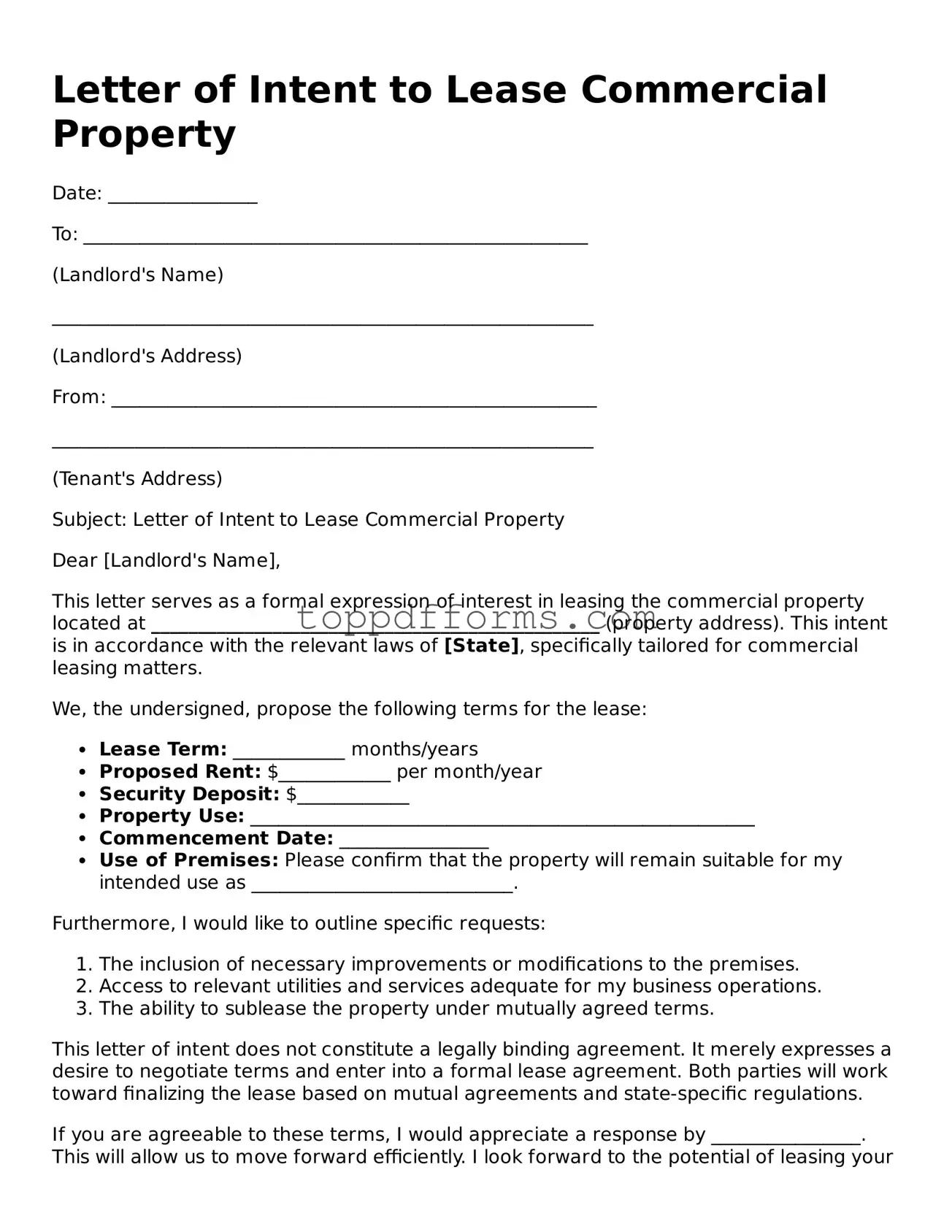What is a Letter of Intent to Lease Commercial Property?
A Letter of Intent (LOI) to lease commercial property is a preliminary document outlining the basic terms and conditions that a potential tenant and landlord agree upon before drafting a formal lease. It serves as a starting point for negotiations and helps both parties understand each other's intentions regarding the lease agreement. While not legally binding in most cases, it reflects the commitment of both parties to move forward in good faith.
What key elements should be included in the LOI?
Typically, an LOI should include essential details such as the proposed lease term, rental rates, security deposits, and any options for renewal or expansion. It may also cover specific responsibilities for maintenance, utilities, and improvements to the property. Including these elements helps clarify expectations and can prevent misunderstandings down the line.
Is the Letter of Intent legally binding?
Generally, a Letter of Intent is not legally binding, meaning that it does not obligate either party to enter into a lease agreement. However, certain provisions within the LOI, such as confidentiality clauses or exclusivity agreements, may be binding. It's crucial to clearly state which parts of the document are intended to be enforceable to avoid any confusion.
How does the LOI impact the formal lease agreement?
The LOI serves as a foundation for the formal lease agreement. It helps both parties identify and agree on key terms before investing time and resources into drafting a detailed lease. The formal lease will typically expand upon the terms outlined in the LOI, providing a more comprehensive legal framework for the tenancy. Therefore, a well-crafted LOI can streamline the leasing process.
Can the terms in the LOI be negotiated later?
Yes, the terms outlined in the LOI can be negotiated later. The LOI is meant to facilitate discussions and can be adjusted as both parties continue to negotiate the final lease agreement. Open communication is vital during this phase, as it allows for flexibility and ensures that both parties are satisfied with the final terms before signing the formal lease.
